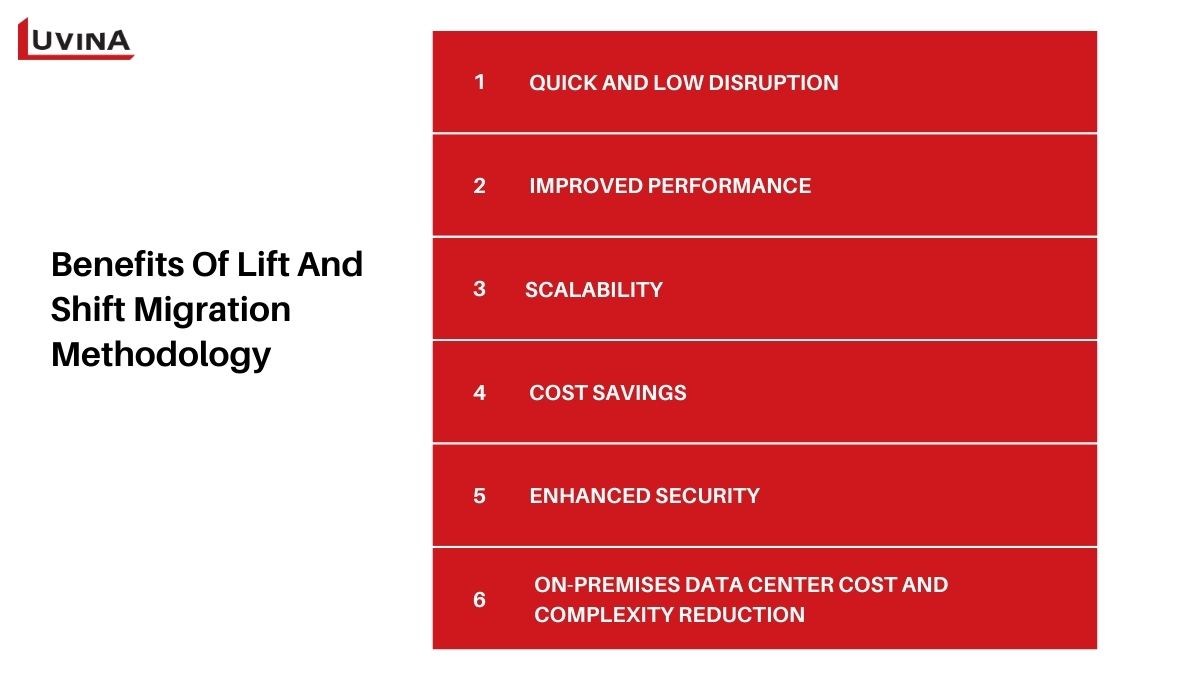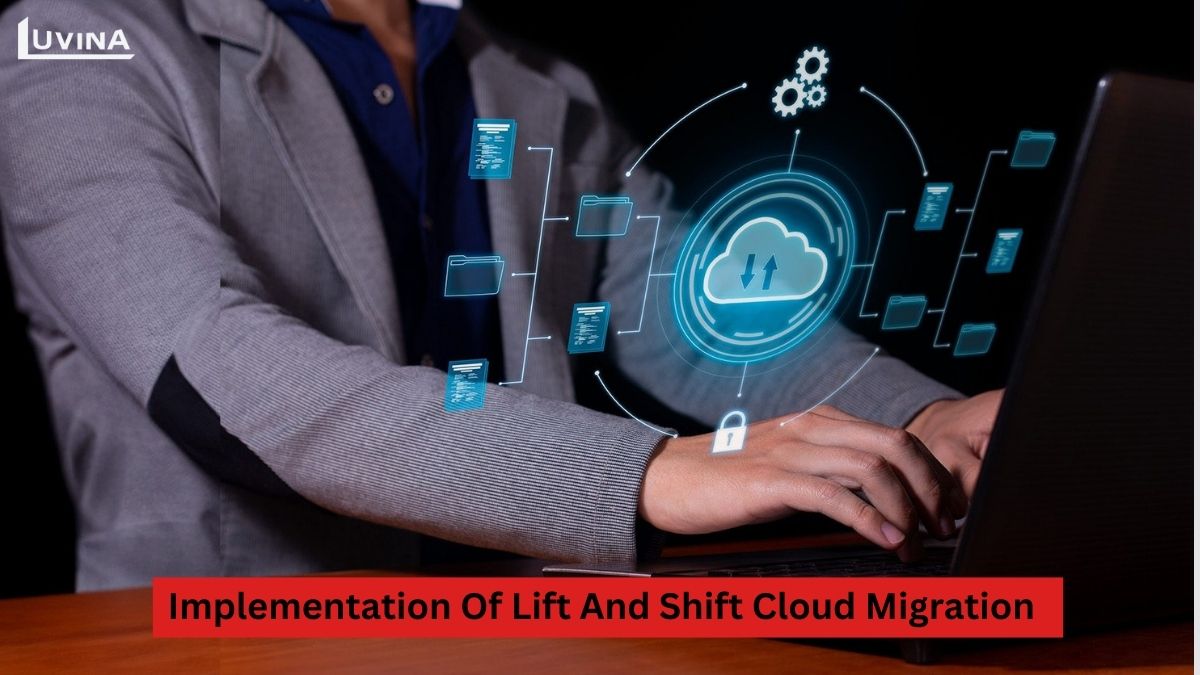Cloud migration may bring very serious changes in an organization’s IT landscape. One of the most advantageous approaches to cloud migrations is lift and shift cloud migration or rehost in the cloud. It is one of the easiest and least expensive ways for workload transfer onto the cloud and finds wide application in businesses of all scales today.
Below, we will learn more about the types of cloud migration lift and shift, the benefits of lift and shift, and, of course, see how one can effectively implement it to maximize the mentioned benefits.
What is lift and shift cloud migration?
If you refer to cloud migration options, you might have heard of the lift and shift methodology, but not understand lift and shift meaning. Lift and shift cloud migration, also called rehost cloud migration, is one popular approach in which an application or workload is moved with its data and operating system from one IT environment to another, mostly from an on-premise setup to a public or private cloud.
With this method, businesses generally do not need to change the application’s architecture, data flow, or authentication mechanisms. Instead, they just need to consider factors like computing, storage, and network requirements.

Because it requires minimal changes to the application’s architecture or code, lift and shift migration allows businesses to migrate to the cloud more quickly, with less effort, and at a lower initial cost. Compared to other methods, it’s the fastest and most cost-effective way to shift IT costs from capital expenditures (CapEx) to operational expenditures (OpEx), initiating a hybrid cloud strategy and leveraging cloud computing, storage, and scalability.
Initially, cloud migration lift and shift was seen as an optimal method for all types of applications and data, except for very old, complex, and tightly integrated applications. However, as cloud architecture has evolved, this method may not be the best long-term solution.
Today, lift & shift migration is mainly used to move workloads that are somewhat cloud-ready or as a first step before redesigning applications specifically for the cloud.
Benefits of lift and shift migration methodology
Indeed, the easiest steps toward a hybrid cloud model are represented by the lift and shift cloud migration. Otherwise said, it is about moving the most suitable and ready applications either to a private or public cloud, continuing, though, to host workloads on on-premises applications. However, such an option is available to not all applications.

Compared to running applications on-premises, lift and shift data migration offers several attractive benefits:
- Quick and low disruption: Rehost lift and shift allows for fast migration without requiring extensive investment in resources. On-premises applications can be moved with minimal disruption, maintaining service continuity and user experience.
- Improved performance: Rehost migration offers the chance to run applications on updated hardware with better performance without having to purchase new hardware.
- Scalability: By lift and shift cloud migration, businesses gain access to scalable computing, storage, and bandwidth resources as needed. This consolidates infrastructure and reduces on-premises data center costs, allowing for easier application scaling without physical hardware purchases. Companies don’t need to prepare for peak access periods with excess hardware.
- Cost savings: One of the greatest benefits of rehosting rehosting in the cloud is cost savings. The more the application is used, the more the business can save. Businesses only pay for the features they need at any given time.
- Enhanced security: Lift and shift migration can allow even older applications to benefit from advanced cloud security services.
- On-premises data center cost and complexity reduction: As more applications get moved to the cloud, it enables an organization to reduce its on-premise infrastructures and thereby reduce the costs and complexity of managing and maintaining such infrastructure.
How to implement a lift-and-shift migration to the cloud?
The process of implementing lift and shift cloud migration can be divided into three main stages: pre-migration, preparation, and execution.
During the pre-lift and shift rehost stage, the business—either independently or in collaboration with a service provider—assesses the requirements for cloud migration. This phase includes evaluating the current system and processes, as well as the chosen cloud environment. These evaluations help determine the feasibility of migration. Additionally, businesses should identify any gaps in the current system and determine the most viable solutions to fill those gaps and modernize the application.
The second stage is preparing for the lift and shift to the cloud. Here, the business needs to consider technical factors, and security aspects, and train the operational team to become familiar with the new system.
Finally, the execution of migration lift and shift occurs once all assessments and planning are completed.

To maximize the benefits of the lift and shift applications, businesses should focus on the following tasks:
- Identify data bottlenecks: Recognize any potential data transfer issues that might affect performance.
- Verify compliance requirements: Understand the security and compliance requirements for both the application and the data.
- Prioritize migration: Start with the most critical applications first.
- Manage downtime: Ensure that business functions remain operational during the lift and shift to the cloud process.
- Monitor costs: Closely track the costs associated with the lift shift cloud, ensuring the project stays within budget and promptly addressing any overages.
When should use a rehosting approach for your business?
To determine when to use lift and shift cloud migration, it’s essential to remember its core nature—migrating application data to the cloud without redesigning the application’s structure or code. No single cloud migration approach fits all businesses, but here are some scenarios where the lift and shift model is appropriate:
- Short-term projects and temporary solutions: If you need to quickly transition to cloud infrastructure for a short-term project or until you can focus on developing a long-term cloud-native solution, lift shift migration can be used before moving on to more complex solutions.
- Testing the cloud environment: Some companies are hesitant to fully transition to the cloud. In such cases, businesses can test the cloud environment’s performance before committing significant resources. Here, shift and lift migration serves as a great option.
- Fast migration with minimal infrastructure changes: If you need to move applications to the cloud quickly without significantly altering the architecture, ensuring that the application continues to operate to maintain business continuity, lift and shift migration is a suitable approach.
- Cost-effective migration method: If your goal is to migrate to the cloud quickly and at the lowest possible cost, lift and shift cloud migration is ideal. It minimizes the need for investment in redevelopment or redesign, potentially eliminating these costs.
- When your team is unfamiliar with cloud-native solutions: If your team is not yet well-versed in cloud-native solutions, Lift and Shift can offer a simpler transition to the cloud.

There are scenarios where the lift and shift cloud migration approach is unsuitable. This method doesn’t work well in situations where data must be redesigned or restructured before it can be used in the new environment. For instance, databases and applications used in healthcare or financial services often require additional security and compliance measures that may necessitate significant redesign.
Additionally, older applications that are being replaced by newer, more modern versions might not need to be migrated at all. The newer versions may have features that are incompatible with the old data or workflows. In such cases, businesses should consider alternative migration methods.
Conclusion
Lift and shift data migration is a very simple approach for businesses looking to upgrade to the cloud quickly. However, businesses must choose and partner with the right company to ensure a successful migration process. Luvina can address the challenges of cloud migration that your business is facing.
Currently, Luvina uses rehosting in cloud as the main method to meet clients’ cloud migration needs. This method allows businesses to migrate to the cloud quickly, cost-effectively, and with enhanced security. At Luvina, lift and shift migration can be performed manually or using automated tools such as AWS Server Migration Service. Partner with Luvina today to:
- Experience stable and excellent service quality: Luvina, a leading company with ISO 9001-certified service quality, is committed to helping businesses migrate to the cloud most stably and efficiently possible.
- Access a skilled talent pool: More than 750 highly skilled developers at Luvina can adapt well to advanced technology.
- Enhanced security and protection: Luvina ensures international security standards like ISO 27001 throughout the collaboration with clients. Your business’s data and IP will be stored with absolute safety.
- Flexibility and scalability: The development team can scale up flexibly according to project requirements without any hassle and provide 24/7 technical support across all time zones.
Contact Luvina today to get advice on the lift and shift cloud migration solution for your business.
Related Posts:









Read More From Us?
Sign up for our newsletter
Read More From Us?
Sign up for our newsletter